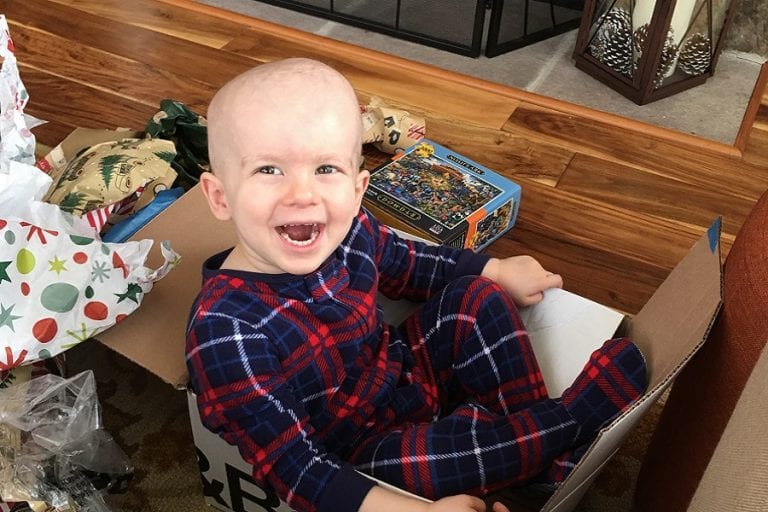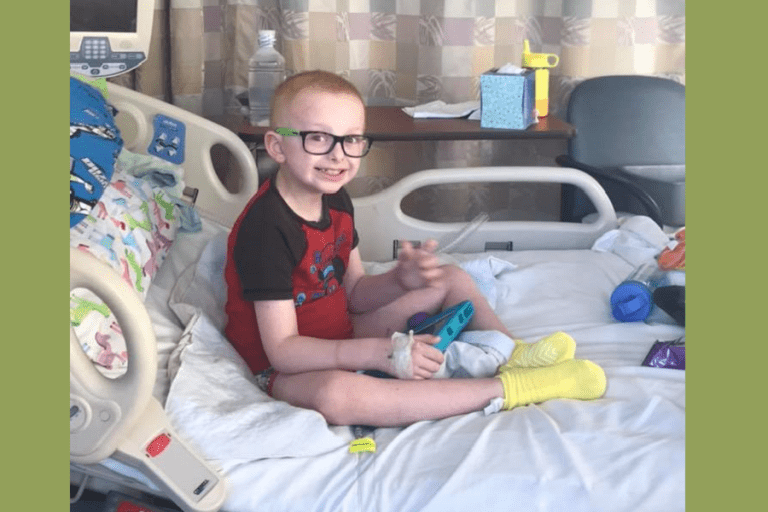Brain & Neural Tumors
These types of cancer affect the brain or nervous system.
Brain Tumors
Brain tumors, tumors that grow inside the skull, are among the most common types of childhood cancer in the United States.
Treatment for children depends on where the tumor is and the type of cancer. The treatment can be different than adults and may include surgical tumor removal, chemotherapy or/and radiation.
Why we need better, safer treatments:
Some late effects from treatment and tumor removal include seizures, hearing or vision loss or impairment, learning disabilities and more.
The 5-year survival rate can range anywhere from 30- 95 percent depending on the cancer type.
Neuroblastoma
Neuroblastoma, a cancer that forms in a child’s nerve tissue, can form in the adrenal glands, neck, chest or spinal cord. Sometimes, the disease can even start growing before a child is born. Nearly 90 percent of the time cases are diagnosed in children under 5 years old.
Treatment for this cancer includes surgery, radiation, chemotherapy, immunotherapy, stem cell transplant or a combination of all of them. Even if a child has no evidence of disease, they still need to go through all the treatment, which can take over a year.
Why we need better, safer treatments:
Children who survive neuroblastoma can suffer from a variety of late effects including hearing loss, inner-ear damage, neurological disorders of the eye, infertility and more.
The 5-year survival rate for children with low-risk neuroblastoma is higher than 95 percent, but for children in the high-risk group, the 5-year survival rate can be as low as 40-50 percent. It has a long-term survival rate of only 15 percent.
Retinoblastoma
Retinoblastoma is a cancer which occurs in the retina of a child’s eye and most often affects kids who are under 6 years old. About 200 to 300 children are diagnosed with retinoblastoma each year in the U.S. Many families discover their child has retinoblastoma when the pupil of their child’s eye has a white glow seen in photographs.
Children with retinoblastoma may undergo laser surgery, radiation, chemotherapy or, in some cases, a child’s eye may be removed. They can also receive cryotherapy (freezing therapy) in conjunction with laser therapy and chemotherapy.
Why we need better, safer treatments:
Late effects from treatment may include blindness, vision impairment, reduced kidney function, hearing loss, delays in growth development, increased risk of other cancers and more.
Currently, the 5-year survival rate for children with retinoblastoma is 97 percent. However, survival rates are lower in children whose cancer has spread.
Sources: U.S. National Library of Medicine, American Cancer Society, The New England Journal of Medicine, National Cancer Institute
You can help fund better treatments for childhood cancer
Every $1 donated helps researchers secure $18 in additional funding to make groundbreaking discoveries.
Understand more about brain and neural tumors with these articles:
Connor’s Story – Shining Hope
When Bernadette took her son Connor into the emergency room, doctors first told her that the bouts of rapid eye blinking and shaking on one sid...
Targeting Pathways for Neuroblastoma
Logan (above) is fighting neuroblastoma. Approximately 700 kids in the U.S. are diagnosed with neuroblastoma each year. Read Logan's story here...
Upcoming Clinical Trial Takes Aim at Brain Tumors
Childhood brain tumors cause the most cancer-related deaths among kids and young adults ages 0–19, recently surpassing leukemia. But, a profo...



